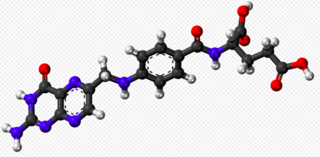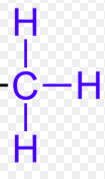Depression
Your Brain on Folate
Vitamin B9 plays a big role in the life of the brain.
Posted June 21, 2016
The latest psychiatry journals are absolutely hopping with trials of folic acid and its downstream metabolite, methylfolate. We have this article from AJP, this one from JAMA Archives, along with these two from the Journal of Clinical Psychiatry. We’ve got multiple formulations of folates tested, considerations of genetic risk, multiple brain conditions…it’s a B vitapalooza in the psychiatric world these days, but what does it all mean?
In order to answer the question of what folate has to do with depression, we’re going to need several blog posts. But we have to start with the basics, so buckle up for some biochemistry. Folates (otherwise known as versions of vitamin B9) play a number of roles in the body and brain. They are necessary for making DNA, neurotransmitters, cellular detoxification, and the proper formation of the nervous system during development. Clinically, we are interested primarily in the one carbon or methylation cycle and the methylation of DNA…don’t worry, we’ll break it down for you.
Here we have folic acid:

This is the pure molecule found in supplements and in supplemented grains. In foods like beans, nuts, meat, eggs, and leafy greens, folates* come in several forms, most of them a downstream metabolite of the pure form folic acid. Why is this important? Well, several drugs (such as valproic acid and lamotrigine** used in seizures and bipolar disorder) interfere with the metabolism of folic acid to the final form that is most active in the brain, methylfolate. In addition, there are a number of genetic issues that interfere with this same pathway. Here is a diagram of the process that is simplified by skipping a few steps, but will work for these purposes:

The far more complex folate cycle can be seen here…but a crude simplification is that these all these chemical conversions consist of passing a little methyl group around (which is why this is sometimes called the one carbon cycle or the methylation cycle). A methyl group is simply a carbon stuck to 3 hydrogens:

I tend to think of a methyl group as the “football” in the cycle, with the B vitamins, enzymes, and amino acids the different running backs and quarterbacks and wide receivers. The “touchdown” is recycling the waste product homocysteine back into methionine, an amino acid we get in our diets. This final step (though since it is a ‘cycle’ there is no final step, but rather an endless loop from conception to death) happens during the process when THF is eventually made into methylfolate.
Methylfolate is essential in the brain for making neurotransmitters and DNA. If we don’t make methylfolate, we end up low on materials to make neurotransmitters and DNA but also high homocysteine (associated with low folate and other B vitamin levels and also genetic mutations of the gene that makes the MTHFR enzyme). High homocysteine is associated with illness such as strokes and high blood pressure. There was even a “homocysteine hypothesis of depression” where people with low amounts of B12 and folate and/or people with genetic inability to efficiently use B12 and folate to clear homocysteine had higher levels of vascular disease in the brain, which led to depression as a side effect. Indeed, in several studies there was a correlation found between low folate and/or low B12 and high homocysteine and depression, particularly in middle aged or older adults, the largest of these being the Rotterdam study. It was also abundantly clear that folate and B12 were not a cure-all and that it certainly wasn’t the whole story behind depression.
To make things even more complicated, we also turn on and turn off the expression of our DNA via the use of that same football, the methyl group. The more methyl groups on a wad of DNA, the less that DNA is translated and made into proteins the cells use. This fact can be particularly important when it comes to brain chemistry, where reuptake transporters dictate how many neurotransmitters are floating around helping the communication between neurons. If you have more methylation, you have fewer reuptake transporters made, which gives your more neurotransmitters in the synapse. Take a deep breath and soak that in for a bit; we’ll talk about it more in the next blog post.
But to finish off our initial exploration of folate, when it comes to the folate cycle and methylation, we should take it back to the football analogy. Some folks are born with Tom Brady and others have a Tim Tebow***. Some folks through deficiency of vitamins or other raw materials keep the football team underpowered. It’s a complex cycle and any number of genetic issues or dietary deficiencies or excess of waste products could cause problems that might have something to do with depression. Why the glut of recent papers in the psychiatric literature? Well, for the first time we have the availability of relatively cheap genetic testing plus pharmaceutical grade supplements like methylB12 and methylfolate. Sounds like a good thing! Not so fast…there’s a lot we still don’t know and some intriguing questions in the folate story. But we’ll save that for another blog post.
*one confusing point for those who took basic chemistry and think…hey, isn’t folic acid and folate the same thing? Well, in solution, folic acid and its conjugate base make up folate and since both exist simultaneously yeah, it’s basically the same thing…but when you read about “folate” in the physiologic sense what folks are often talking about are not only folic acid but also the downstream metabolites of folic acid such as dimethylfolate, methylfolate, folinic acid, etc. so just keep that in mind. If you never took chemistry this point probably won’t bug you :-).
**lamotrigine more consistently interferes with folate in rats than in humans, and a recent study has shown that 500 mcg folic acid seems to keep lamotrigine from working for bipolar depression! (https://www.researchgate.net/publication/286869794_Comparative_evaluati…) Could this be because folic acid was used rather than methylfolate? Lamotrigine is also thought to have some weak folate action itself…is there some competition going on?
***sorry I live very near Gillette Stadium, home of the New England Patriots and Tom Brady :-)
copyright Emily Deans MD




